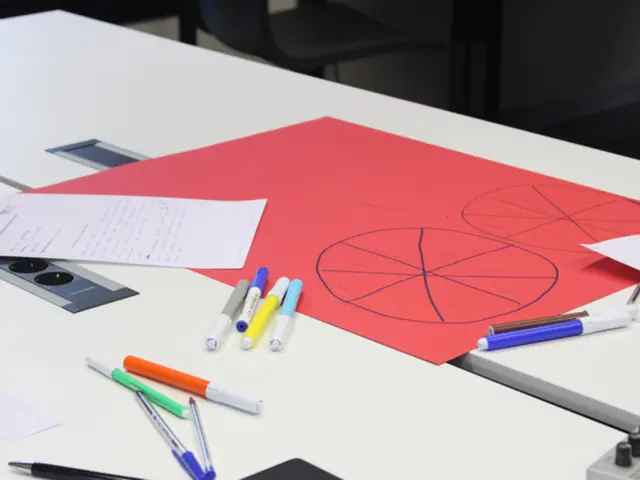Crafting Personalized Visual Timetables: A Detailed, Step-by-Step Tutorial
In the realm of learning and development, visual schedules have proven to be a potent tool for individuals with executive functioning difficulties or neurodivergent conditions such as Autism and ADHD. These schedules, which represent tasks and routines through images or symbols rather than written text, offer a sense of predictability and clarity, reducing anxiety and promoting better task comprehension and execution.
The creation of a visual schedule is a collaborative process, involving the individual in the decision-making process, asking for their input, preferences, and feedback. This personalization can increase engagement and willingness to follow the schedule by incorporating preferred activities or hobbies into the visual schedule.
When crafting a visual schedule, it's essential to determine the schedule format, select appropriate materials and tools, and organize the visuals in a clear and consistent manner. The visuals should be arranged in a visually appealing and engaging manner, using colours and fonts that are easy to read, and leaving enough space between visuals for clarity.
Choosing appropriate visuals is a critical step in the customization process, with considerations including clarity, consistency, cultural sensitivity, and personalization. The success of a visual schedule lies in its clarity and recognizability.
There are three common types of visual schedules: object-based, picture-based, and written word schedules. The choice of schedule type depends on factors such as the number of steps, the individual's ability to discriminate between pictures, their ability to match photographs to symbol representations, and the location where the schedule will be used.
Regularly monitoring the effectiveness of the visual schedule is crucial. This involves paying attention to the individual's engagement with the visual schedule and noting any improvements in task completion and time management. If the visual schedule is not achieving the desired results after several attempts, reevaluate its effectiveness and seek feedback from the individual.
Visual prompts, such as an arrow or a star next to the current task, can help the individual understand their progress through the schedule. Celebrating the successful completion of tasks with praise, high-fives, or small rewards can further motivate the individual to stick to the schedule.
If the individual struggles to follow the schedule, simplify the visuals or break down tasks into smaller steps. If there are changes in the individual's routine, update the visual schedule accordingly and expect that it may be necessary to prompt or help the learner adjust to the new schedule.
The authors of the lead articles about visual plans on the Learning Science Academy website are Katrin Jamnig, Thomas Jandl, and Lela Jobava. Their insights provide valuable guidance for educators and caregivers seeking to implement effective visual schedules for individuals with executive functioning difficulties or neurodivergent conditions.
In conclusion, visual schedules are a powerful tool in promoting better task management for individuals with executive functioning difficulties or neurodivergent conditions. By involving the individual in the creation process, personalizing the schedule, and regularly monitoring its effectiveness, we can create a schedule that is tailored to the individual's needs and promotes a sense of predictability, clarity, and success.
Read also:
- LA Announces March Lineup for Their Site
- Life Transition of Grace Mulvey: Leaving Ireland at Age 33 as Friends Settled Down with Homes and Families in London
- Artificial Bovine Creation, a Touchy Beaver Issue, and the Sculptures of Barbara Hepworth
- Guide for Beginners: Cultivating Indigenous Plants in Permaculture Gardening








